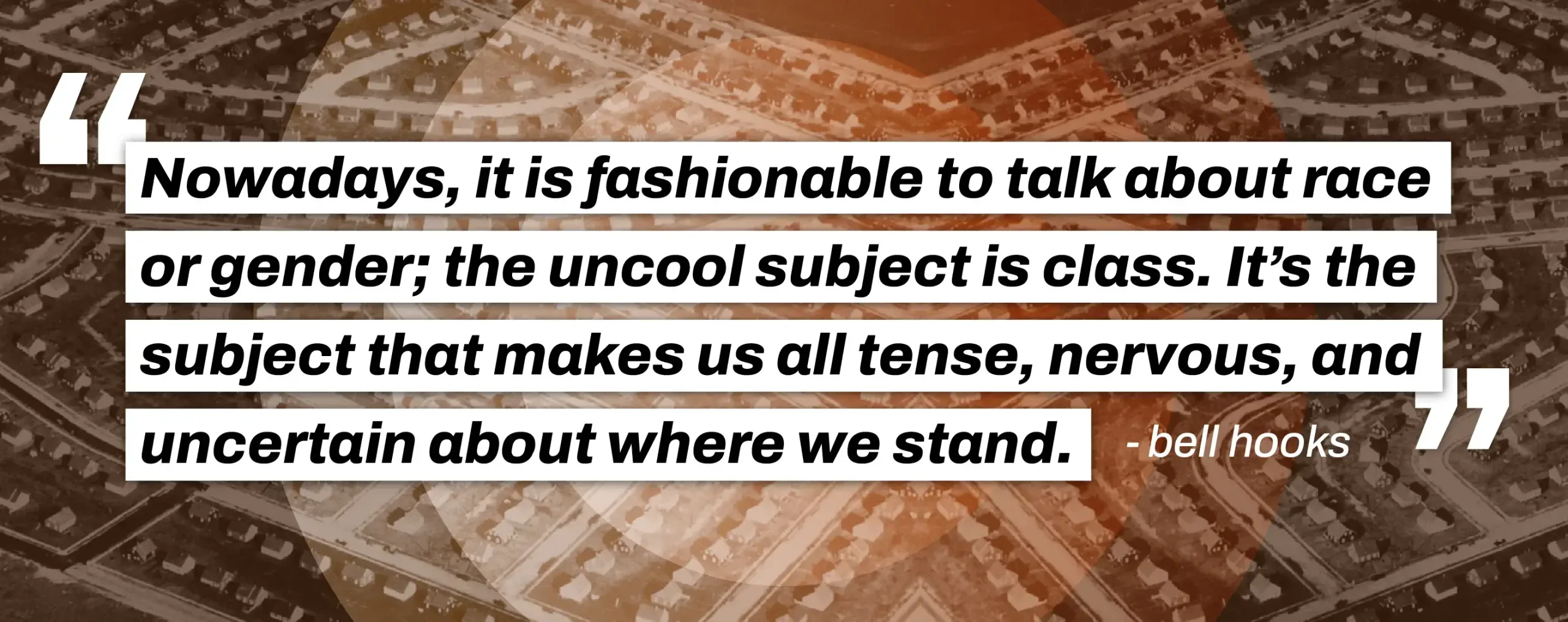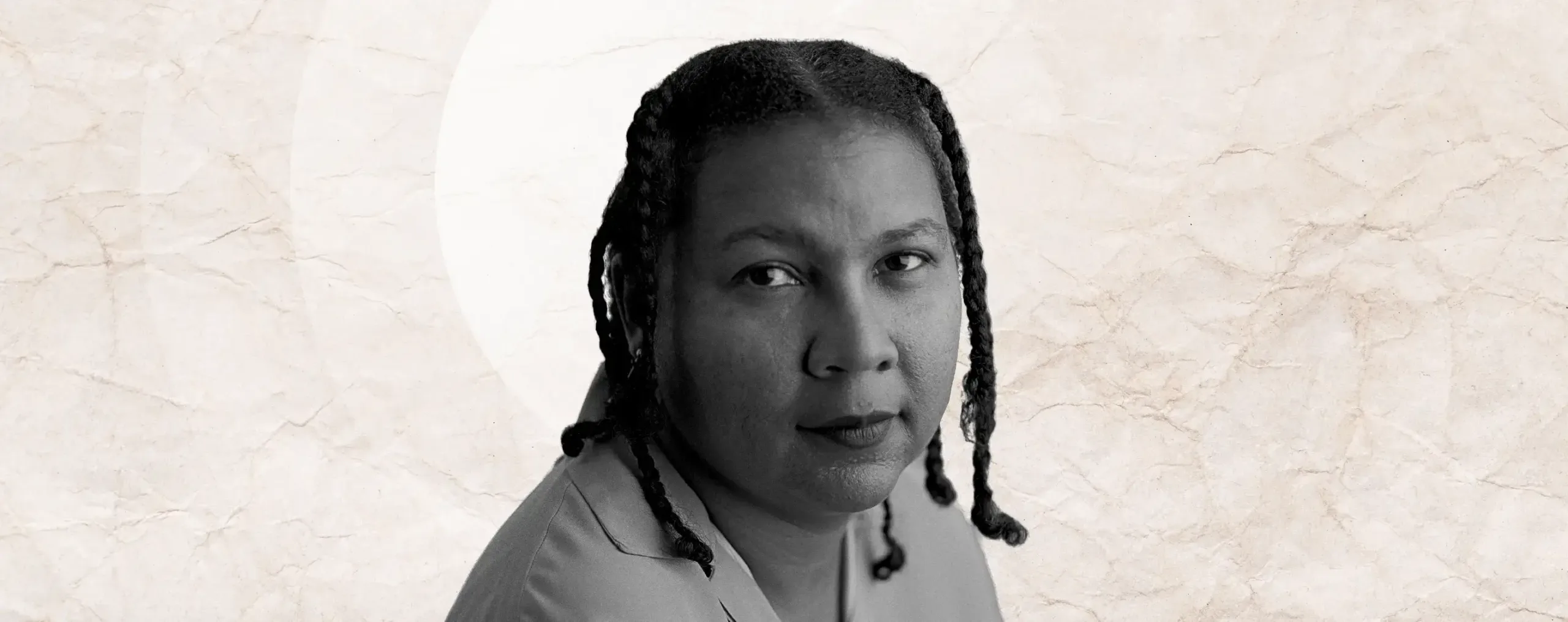“Nowadays, it is fashionable to talk about race or gender; the uncool subject is class. It’s the subject that makes us all tense, nervous, and uncertain about where we stand.” - bell hooks
As the late author, social activist, and Distinguished Professor bell hooks(1952-2021) opens with this statement in the preface of her book, Where We Stand: Class Matters, she sets the tone for her argument that class oppression is a hidden evil less readily discussed than sexism and racism. As one of the most prominent voices on gender, race, and intersectionality, the late author raises an interesting question: why is it uncool to talk about class?
Bell hooks’ writing is rooted in her personal experience as part of the working-poor, her leftist and radical political commitment, and her academic career in social theory. She finds ways to fuse all her experiences with the tough conversations surrounding gender, race, and class. To focus attention on her message surrounding class and to take attention away from herself, hooks opted to keep her pen name in lowercase.
Where We Stand: Class Matters shows how our day-to-day actions can perpetuate class hierarchy without us ever noticing. hooks boldly tackles why the discussion of our class differences remains taboo, yet we’re comfortable discussing topics of gender and race. Where We Stand: Class Matters breaks this taboo down by revealing a compulsory system of ambition, obsession with perfection, and vilified austerity. We are shown examples of how we are conditioned to want upward mobility, shamed when we don’t, and how the socio-economic hierarchy remains untouched as our heads are in the sand. This evidence reveals how race and gender remain “fashionable” to entice oppressed people to “pull up from their bootstraps” and join the system with ambition.
Approaching class differences while navigating our paths is a tough task. The focus of bell hooks’ writing was to explore this path with knowledge and understanding. Among hooks’ 40 books on topics ranging from race, capitalism, feminism, and even love, Where We Stand: Class Matters is a suitable first read for anyone dipping their toe in the waters of confronting class differences. Here are a few chapters to warm your feet, but we definitely suggest the full read!
Money Hungry (Chapter 4)
“Everyone who grows up in a household where there is a lack of material resources knows what it feels like to want things you cannot have, to want what money can buy when there is no money to spare. Poor people know these feelings intimately. And so do individuals who are raised in homes where material resources could be available but are withheld because of avarice or domination.”
While this is the book’s fourth chapter, this is where hooks dives right into the collective obsession with material wealth and the patriarchal distribution of wealth from the household to the overall economy. It discusses how wealth is not so much an obsession as it is conditioned and granted by a male-dominant system.

By way of exposure, generation to generation, there has always been a system of the haves and have-nots: one context as a bleak reality, the other as aspirational. hooks explains how this begins within the household when the father earns and keeps the wealth while also withholding money and only distributing it once expectations are met: the mother cleans the house, and the children complete chores. This patriarchal system has transferred this process over into the job market. To get paid by the male-dominant boss, workers must constantly produce to the boss’s expectation regardless of the labor scope changes.
Summed up nicely by hooks’ romantic partner, “Debt is the American way of life.” This chapter also discusses how material desires have kept people on negative feedback, cycling a dissatisfied with what they have and perpetuating a toxic relationship with money.
The Me-Me Class: The Young and the Ruthless (Chapter 7)
“No matter your class, no matter your race, if you have access to credit, to cash, every store is open to you. In the world of spending, desire for the commodity matters, it cuts across all barriers. In this world there is no need of social awareness, for radical protest. And that world is particularly appealing to a generation of youth who are caught up in the fantasy world that advertising produces, a world where everyone is one where there is no pain, and everyone can belong if they can pay the price of the ticket.”
This chapter reviews the most vulnerable to materialism and greed: our youth. By way of influencing a young person, the ideal version of success is based on “what you can accomplish, what you can do, and how far you can go,” as said by hooks. Youth culture is constantly exposed to the desires of consumption and the clout wealth brings. From designer clothes to luxury cars, materialism has remained the benchmark for success.
hooks digs deep into the sheer lack of empathy training within the walls of the middle and upper-class youth. The youth living comfortably are not exposed to the existence of poverty, racism, and the many layers of oppression. Instead, the notion that everyone can be wealthy and the United States is a classless society is implanted into their minds.

Solidarity of the Poor (Chapter 11)
“Growing up among the poor, I and everyone in our community were taught mainly through the church that the poor were God’s chosen people—that poverty should not be a cause of shame. These teachings promoted respect for the poor.”
This chapter presents how poorness is a culture of communalism–not by choice but by default. With little to no access to higher education and upward mobility employment, the working class has built a community allowing the poor to “survive with their dignity and self-respect intact.” Having pride in a strong community helps to cope with material hardship in a dignified manner.
It is also pointed out that the predation of media/advertising. Originally religion taught that austerity was equal to chosen nobility, or as said by Jesus, “the poor will be with us always.” At the end of the 1970s, the media turned this concept around by vilifying the poor as lazy and uninterested in American exceptionalism, pushing a blanket expectation of excellence onto everyone. The expectation was applied equally, but the access remained imbalanced.
Most importantly illustrated in this chapter is the communal need for one another, not just to see the rich through the lens of cynicism, but to see one another honestly, identify and relate to each other, and create a sense of communal pride in loving both the moment and what they have.
This book’s core takeaways can be found in these three chapters. “Money Hungry” takes us to the root of our desires for wealth. “The Me-Me Class” discusses how gross self-interest is taught and trickled down from generation to generation. “Solidarity of the Poor” shows how communalism is actually the required survivalism needed among the poor. From these chapters, we can understand where greed is bred and approach class differences with compassion. Once we know what divides us, we can only begin dismantling it and work towards uniting ourselves.





